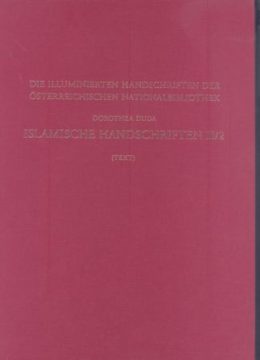Die hier gestellte Aufgabe war die Beschreibung der wichtigsten illuminierten, mit vergoldeten ornamentalen Dekorationen und/oder mit gegenständlichen, symbolischen und figürlich/narrativen Buchmalereien versehenen türkischsprachigen Kodizes der Handschriften-Sammlung der Österreichischen Nationalbibliothek in Wien. Im Sinne der sukzessiven Katalogisierung der illuminierten islamischen Handschriften konnte somit einer der ältesten europäischen Bestände an türkischen, hauptsächlich osmanischen Handschriften bearbeitet werden. Es handelt sich dabei um eine Auswahl aus dem „Alten Fonds“ mit zwei reich illustrierten Genealogien der Osmanendynastie, eine davon aus dem Besitz des Prinzen Eugen, sowie aus dem „Neuen Fonds“, der um 1842 an die Hofbibliothek verkauften 2. Sammlung Hammer-Purgstalls. Zu den Beständen von „Historia Osmanica“, der 1. Sammlung Hammer-Purgstalls, die er 1832 an die Hofbibliothek verkauft hatte, gehört eine historische Handschrift von 1575 aus Szolnok mit einer fesselnden Darstellung der Schlacht von Mohács von 1526. Die sich bis heute fortsetzende Reihe der „Codices mixti“ enthält Miniaturen, Kalligraphien, technische Zeichnungen, Darstellungen islamischer Pilgerstätten und Kartenskizzen zu geographischen Werken. Ausführliche Beschreibungen, historische Hinweise in den Handschriften selbst, Vergleichsmaterial aus den Wiener und anderen Bibliotheken sowie die kunsthistorische und kodikologische Fachliteratur halfen, die jeweilige Handschrift historisch einzuordnen, um sie künftiger Forschung leichter zugänglich zu machen. Der Dokumentation dient auch ein reich bebilderter Tafelband.
Gedruckt mit Unterstützung des Fonds zur Förderung der wissenschaftlichen Forschung
…
This volume has been published to provide a description of the most important illuminated codices in Turkish held by the Manuscript Collection of the Austrian National Library in Vienna. These codices are furnished with gilded ornamental decorations as well as, in some cases, representational, symbolic or figurative/ narrative book illumination. This work is part of an ongoing project of cataloguing illuminated Islamic manuscripts. For this volume, one of the oldest European collections of Turkish manuscripts, in this case mainly Ottoman manuscripts, was examined. Manuscripts have been selected from the „Alter Fonds“, namely two lavishly illustrated genealogies of the Ottoman dynasty, one from the estate of Prince Eugene, and also from the „Neuer Fonds“, the second Hammer-Purgstall Collection, sold to the Imperial Library in 1842. Also material from the „Historia Osmanica“, the first Hammer-Purgstall Collection that was sold to the Imperial Library in 1832, is included, namely a historical manuscript from Szolnok dated 1575, with an enthralling presentation of the Battle of Mohács, fought in 1526. The still-growing „Codices mixti“ collection contains miniatures, calligraphies, representations of Islamic pilgrimage sites and maps from works on geography. Detailed descriptions, historical references within the manuscripts themselves, comparable material from the National Library or other libraries, and scholarly literature on art history and codicology were used in order to place each manuscript into a historical context. This should make the manuscripts more accessible for future research. The documentation is further enhanced by a richly illustrated volume of plates.
- Veröffentlicht am Mittwoch 11. Juni 2008 von Verlag der österreichischen Akademie der Wissenschaften
- ISBN: 9783700138792
- 472 Seiten
- Genre: Hardcover, Kunst, Softcover
